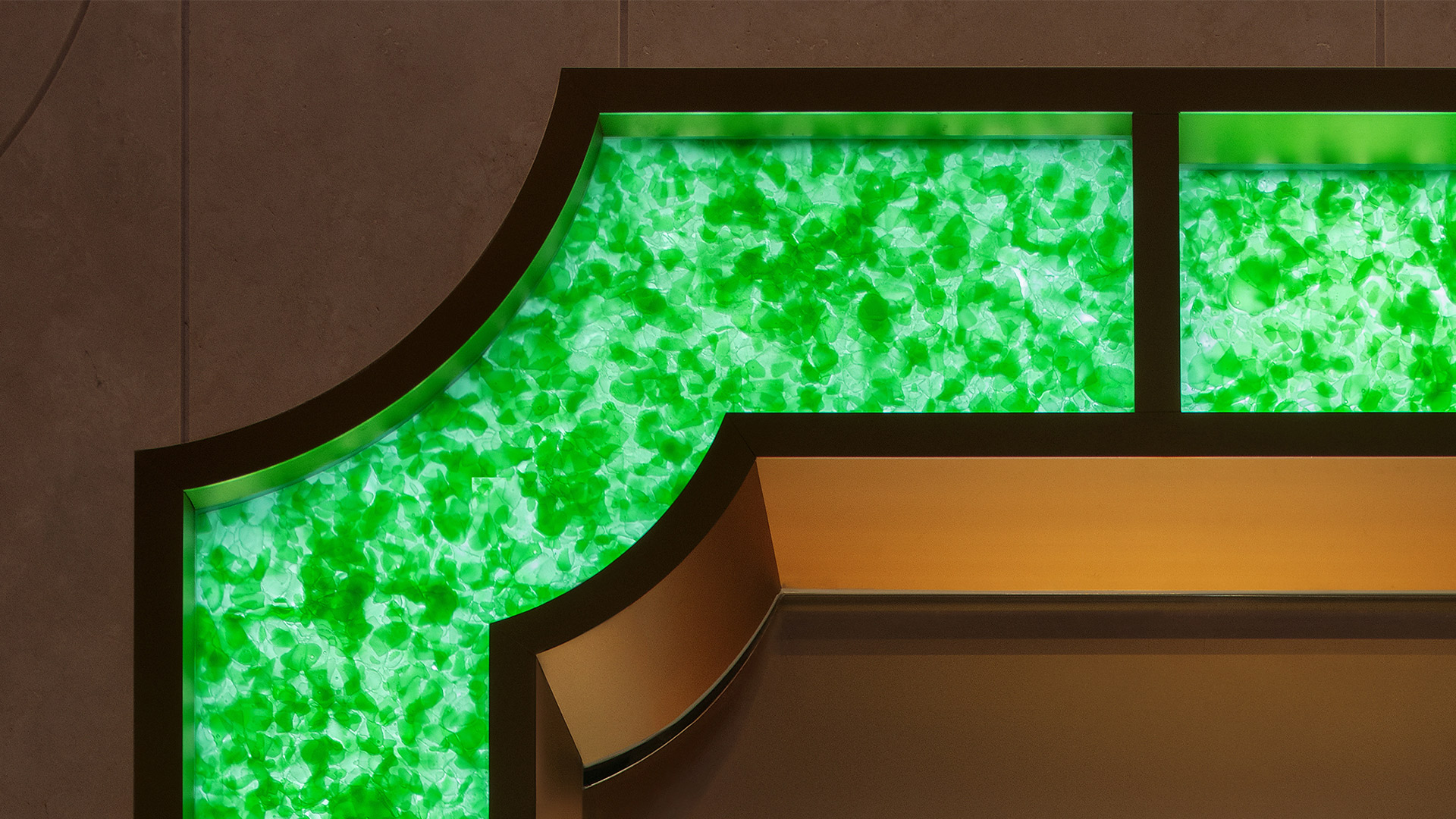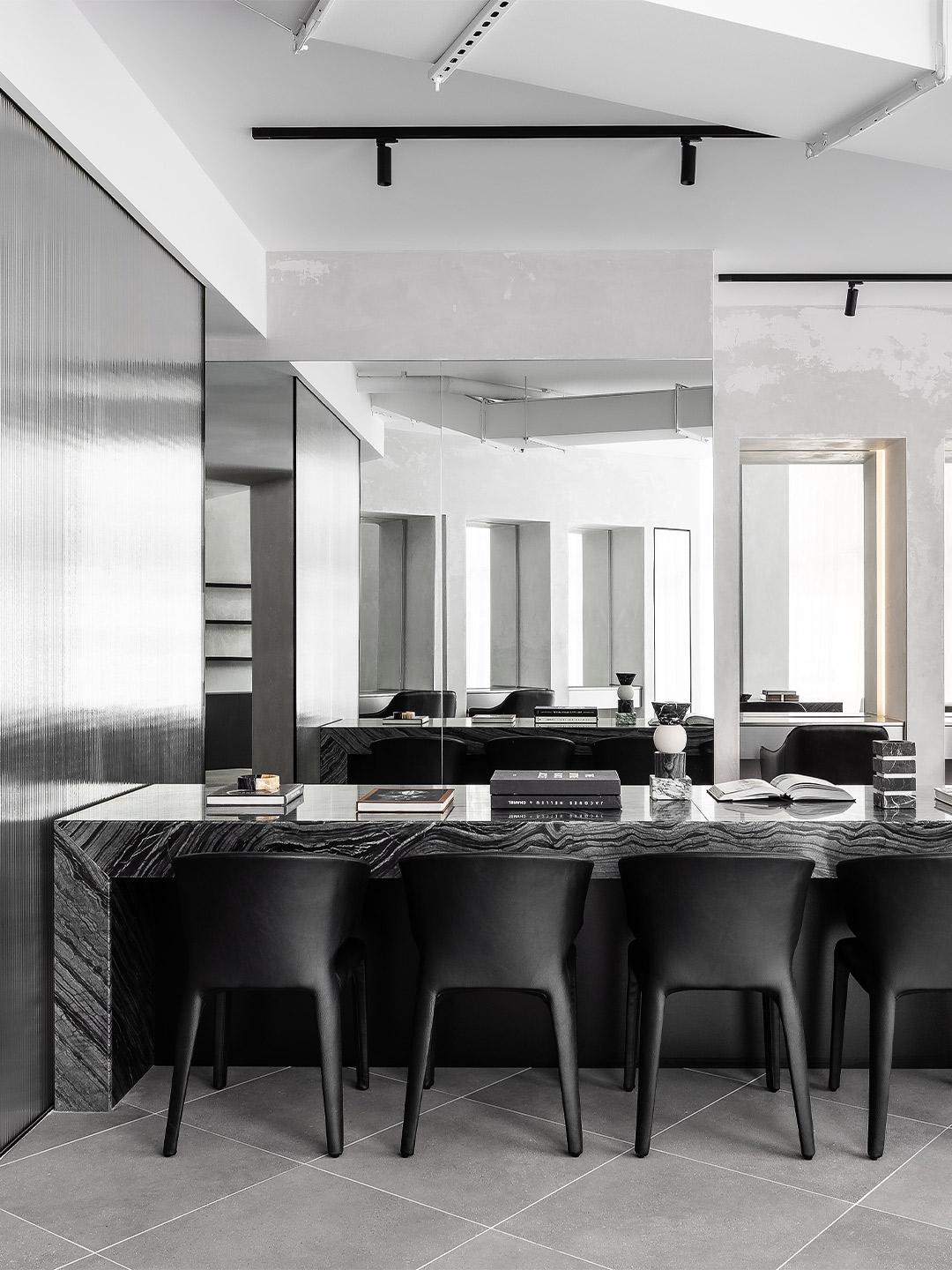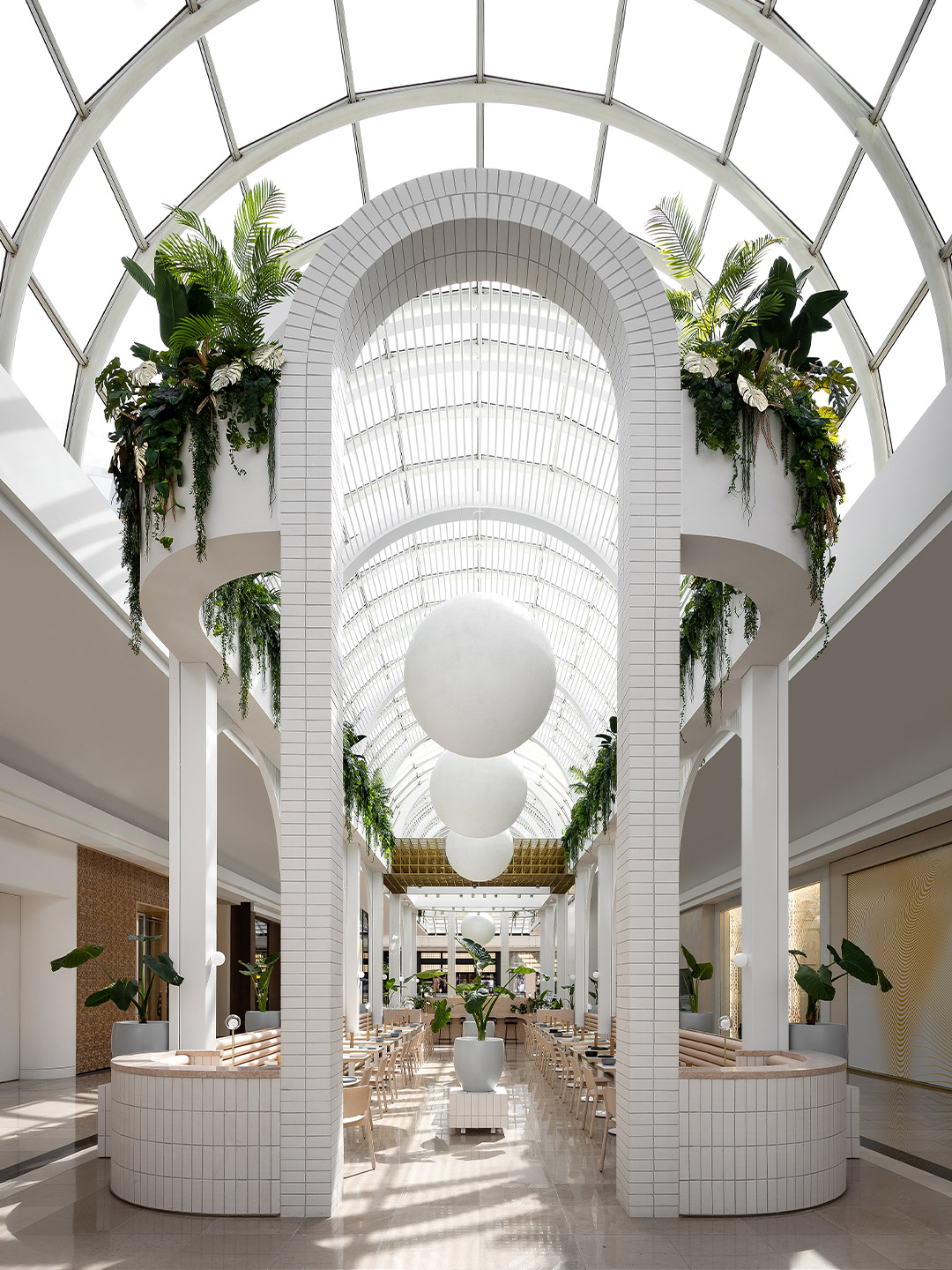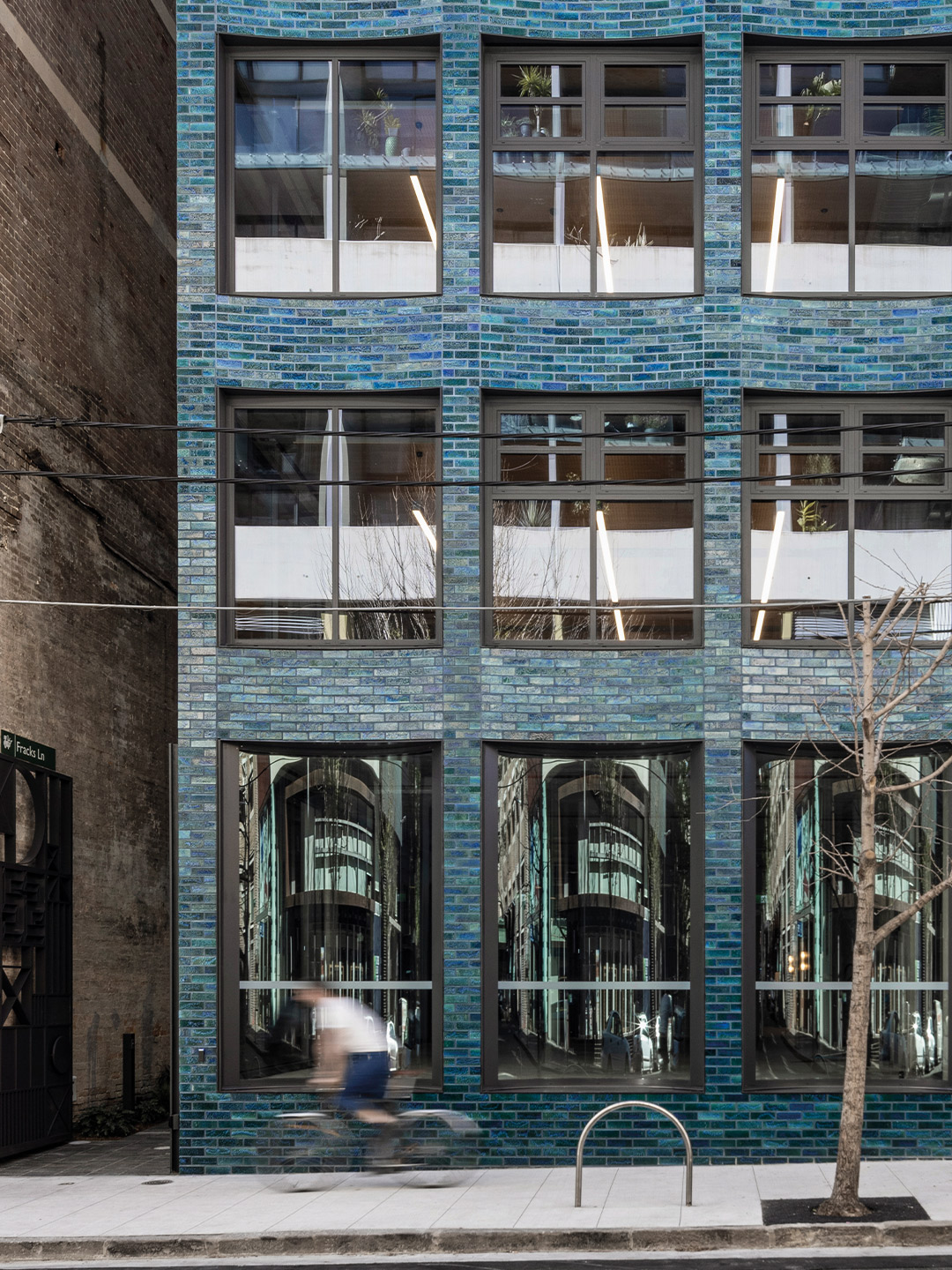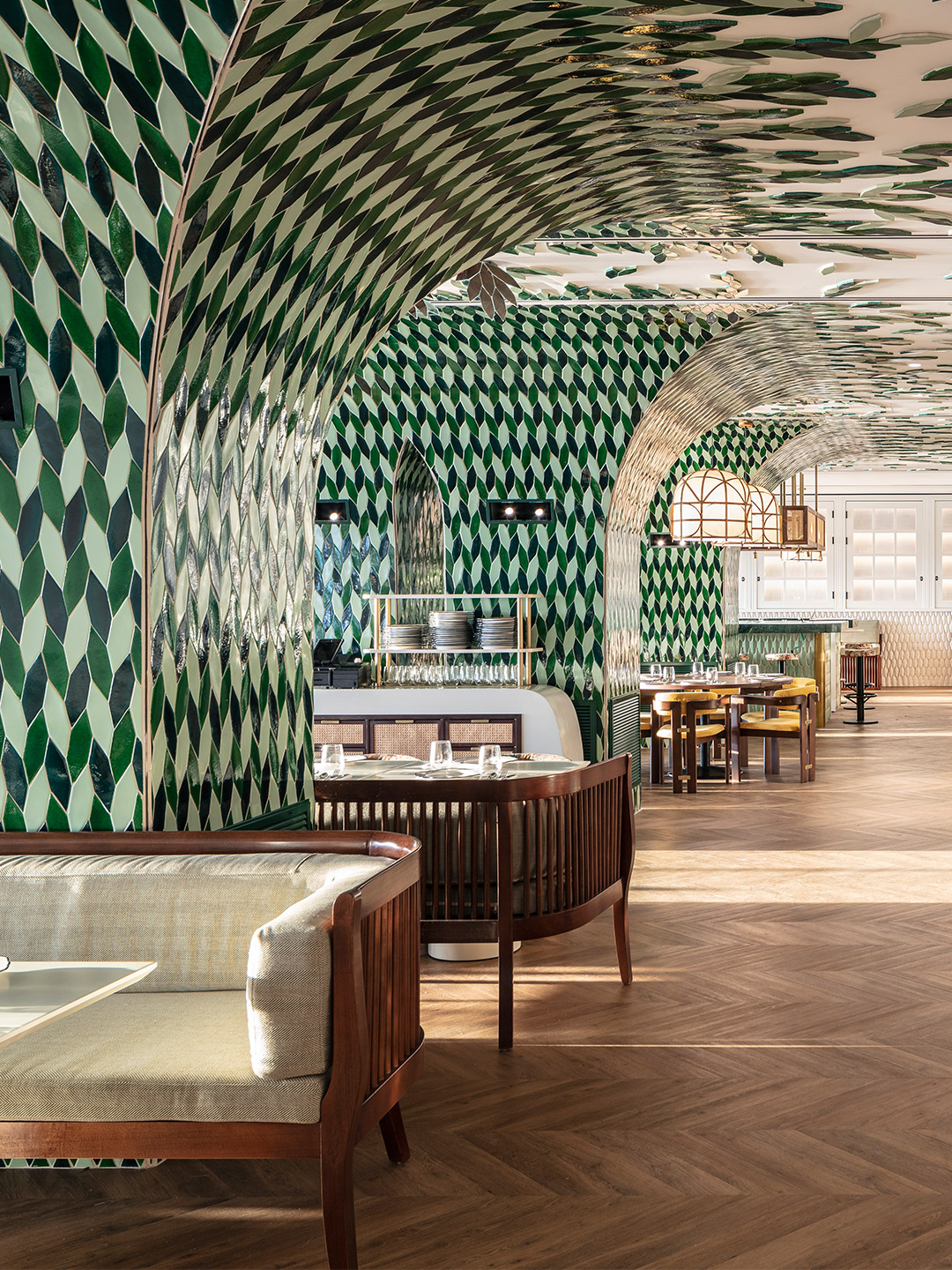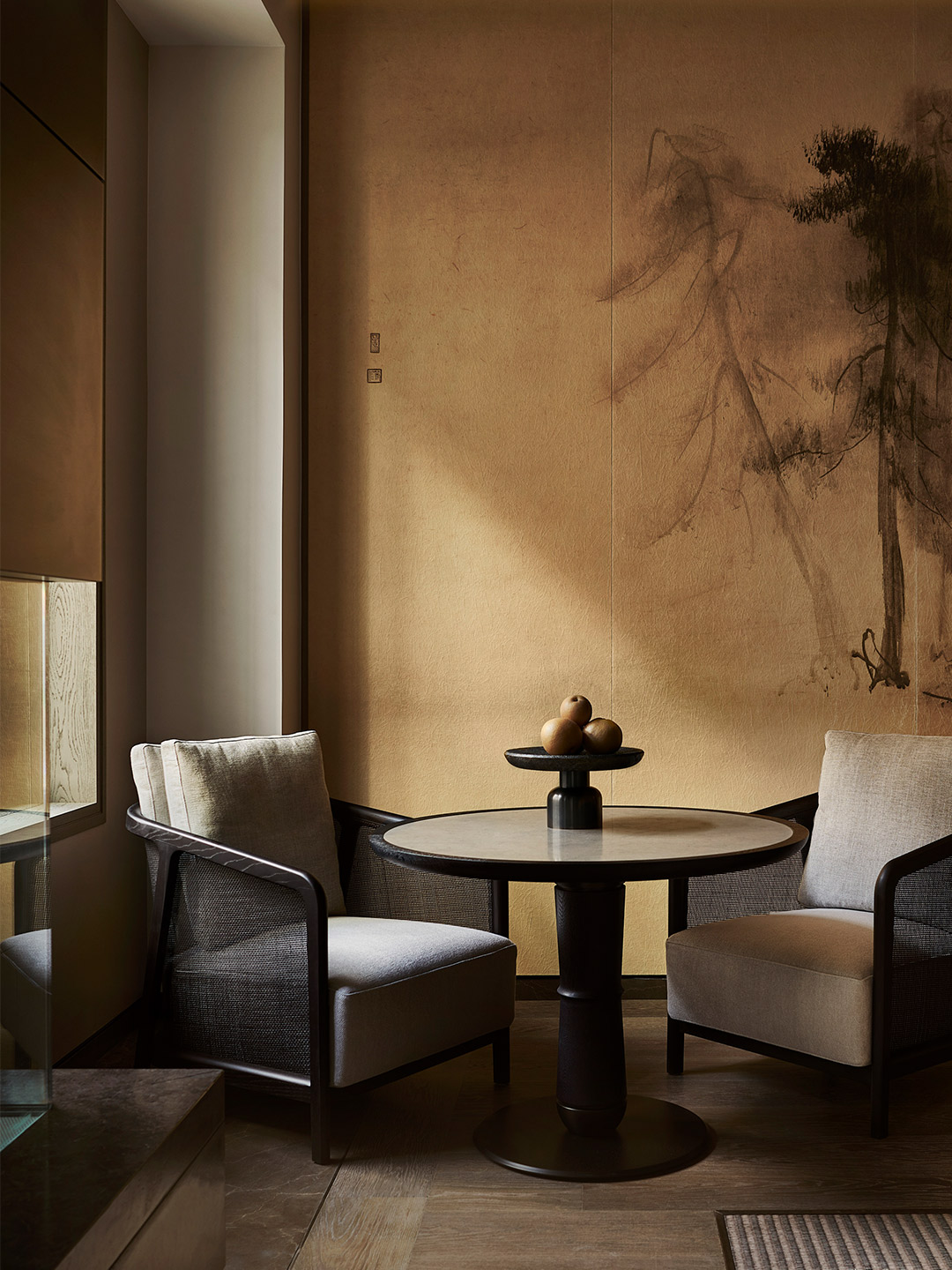Shanghai Plaza 66 – one of the largest and most popular shopping malls on China’s central coast – is now home to the new Bulgari flagship store. Located on the bustling Nanjing Road, the multi-level boutique features a glowing green facade made from old champagne and beer bottles, embellished with shimmering brass accents. Inspired by a medley of influences, ranging from the original Bulgari store in Rome to Shanghai’s unique connection with Art Deco architecture, the project is considered “innovative and sustainable” by its designers, Netherlands-based architecture office MVRDV, who also suggest it “remains true to the heritage of both Bulgari and the city of Shanghai”.
The opening of the Bulgari flagship in Shanghai represents the third facade designed by MVRDV in the ongoing partnership between the Dutch architects and the luxury Italian jewellery brand. As with the other store designs, the Shanghai project makes use of a visual motif inspired by the portals and cornices of Bulgari’s earliest boutique (on the fashionable Via dei Condotti shopping strip in Rome), adopting the recognisable visual identity that now distinguishes the brand’s stores globally.

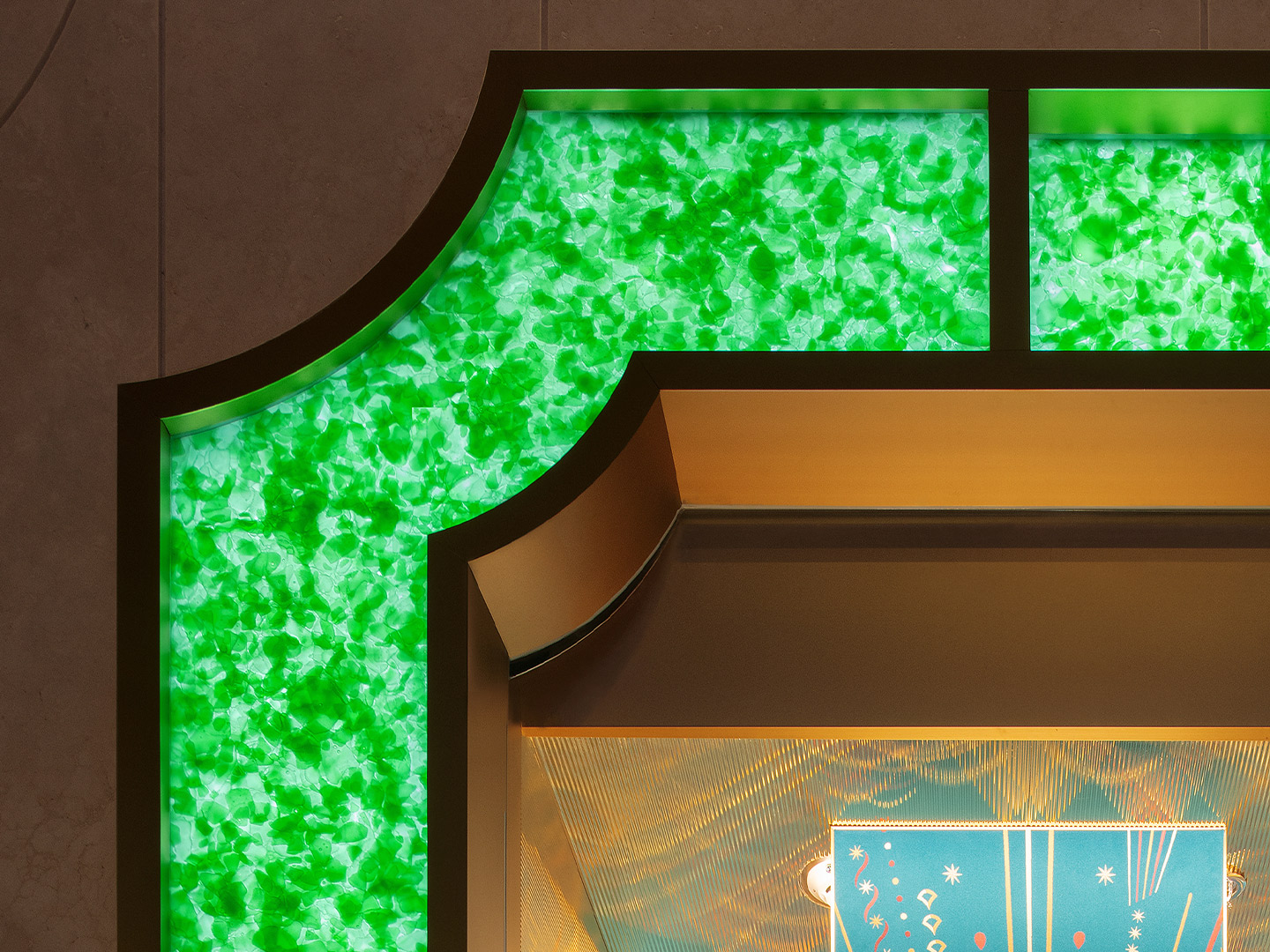
MVRDV unveils the Art Deco-inspired facade of Bulgari Shanghai
However, in a twist on the previous designs, this motif is not used to form windows in the facade. Instead, the Shanghai street-frontage is mostly windowless, and the cornice motif is employed in panels that form a pattern inspired by the Art Deco movement – an era with which Shanghai and Bulgari share a connection. The Chinese city’s status as a key port connecting East and West in the early 20th century gave it a rich tradition in the Art Deco architectural style, while Bulgari’s Déco collection characterised its jewellery in the same period.
To close this circle of inspiration, the facade takes on the materiality of fine jewellery with its coloured panels that resemble jade – China’s most precious stone. The panels were fabricated in Germany using compressed green glass, creating a mesmerising effect with a translucent finish. At night, backlighting gives the facade its striking glow, highlighting the unique textural quality of the recycled glass. By day, the alluring panels transport the building into the fabled streets of Emerald City.
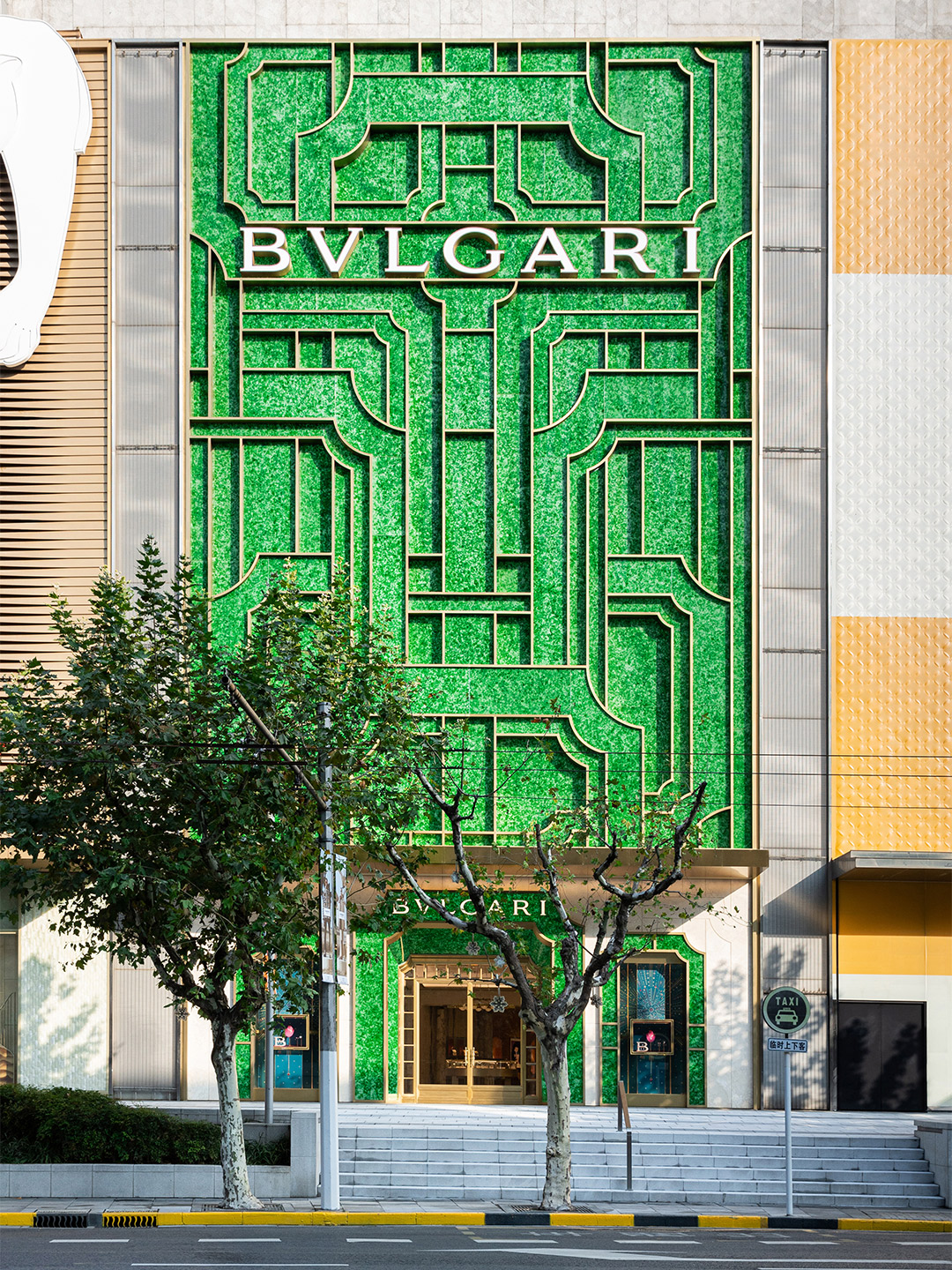
Demonstrating the potential of sustainable recycled materials, even in luxury contexts, the project takes another step towards MVRDV and Bulgari’s shared goal of creating stores that are built using 100 percent circular economy materials. This includes the backlighting that is engineered in Shanghai to minimise the facade’s energy footprint, using less than half the energy of a typical comparable installation.
“Our collaboration with Bulgari has yielded some fascinating material experiments,” says MVRDV founding partner Jacob van Rijs. “It’s a passion we share with them, albeit in different design disciplines. The Shanghai store encapsulates the value of these experiments. Given the right treatment and detailing, leftover champagne and beer bottles, which would otherwise be thrown away, [have] become a jewel for the city.”
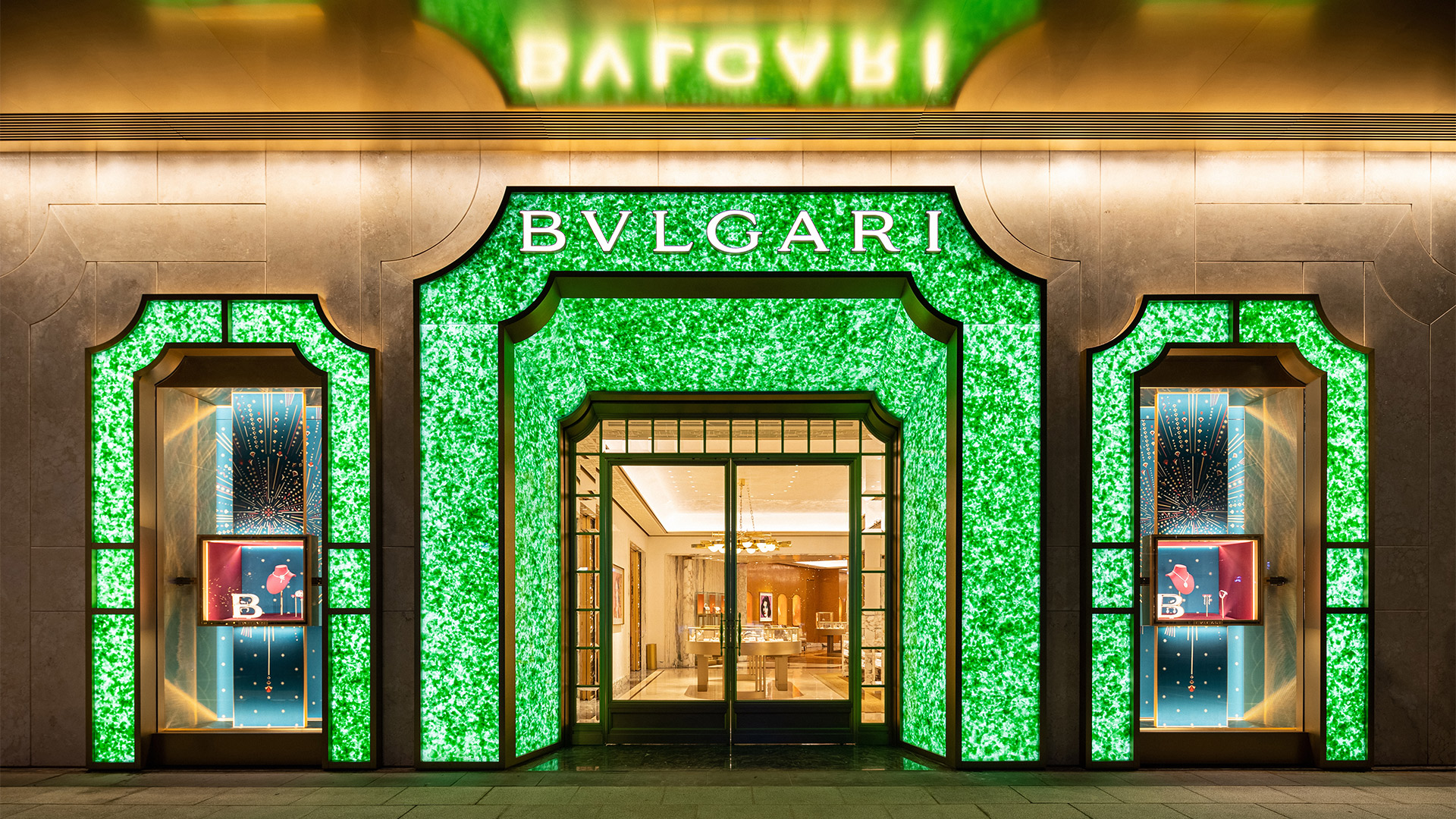
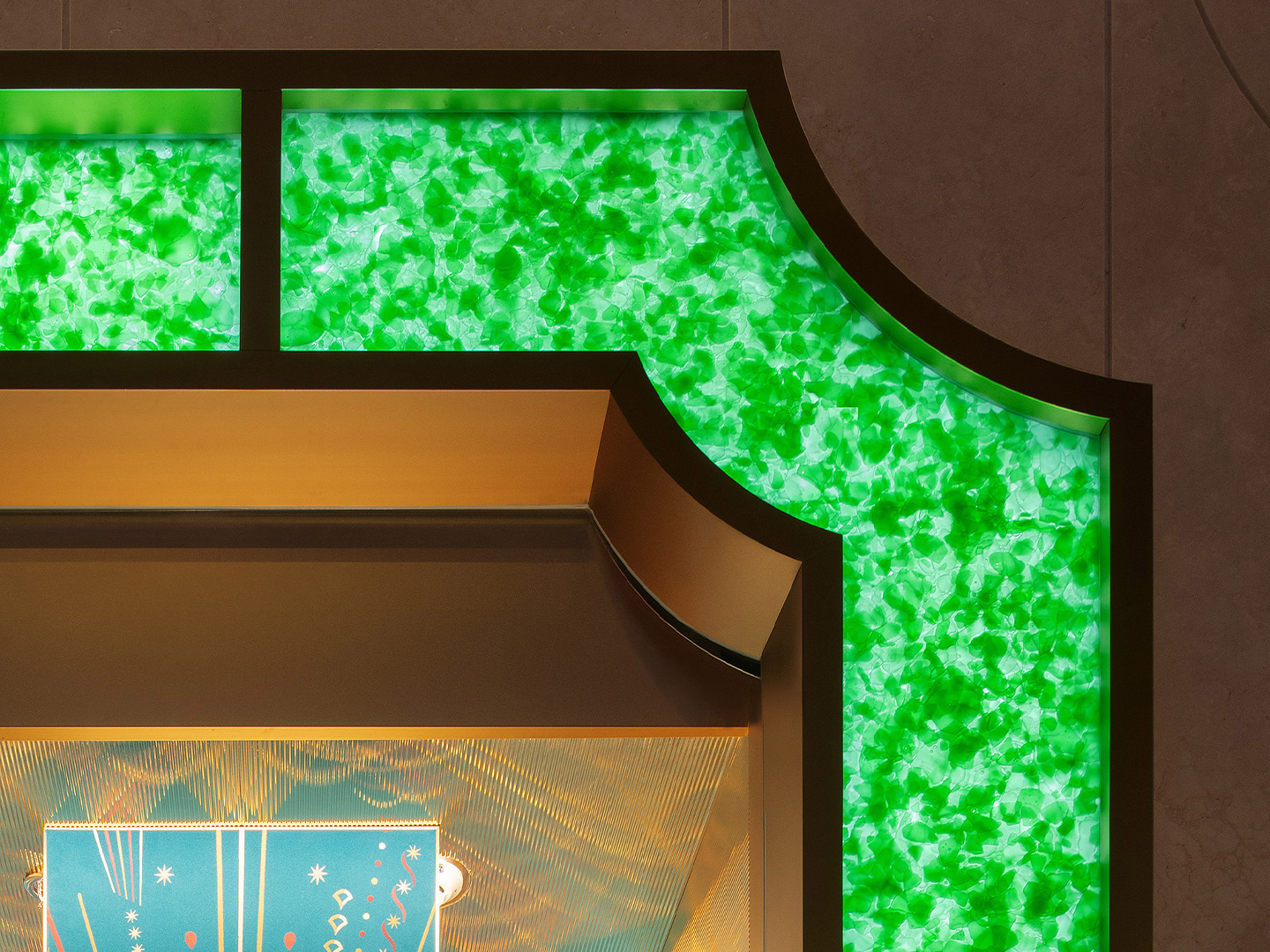
Given the right treatment and detailing, leftover champagne and beer bottles, which would otherwise be thrown away, [have] become a jewel for the city.
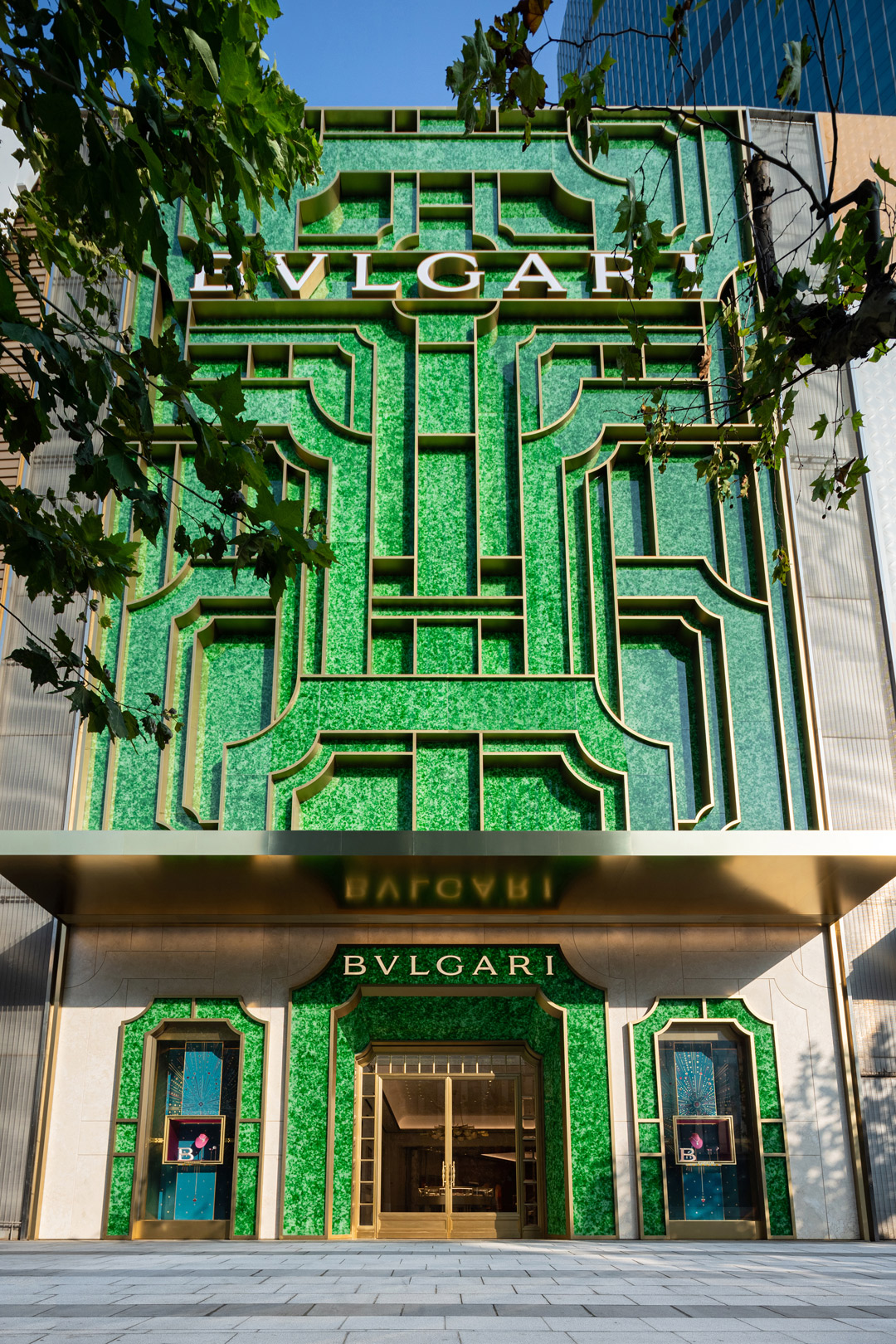
Catch up on more architecture, art and design highlights. Plus, subscribe to receive the Daily Architecture News e-letter direct to your inbox.
